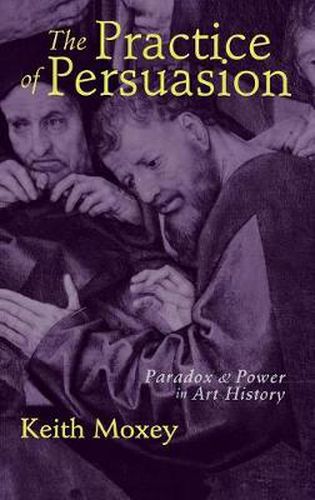Readings Newsletter
Become a Readings Member to make your shopping experience even easier.
Sign in or sign up for free!
You’re not far away from qualifying for FREE standard shipping within Australia
You’ve qualified for FREE standard shipping within Australia
The cart is loading…






This sequel to The Practice of Theory stresses the continued need for self-reflective awareness in art historical writing. Offering a series of meditations on the discipline of art history in the context of major elements in contemporary critical theory - semiotics, feminism, queer theory, postcolonial studies and deconstruction - Keith Moxey addresses such central issues as the status of the canon, the nature of aesthetic value and the character of historical knowledge. The chapters are linked by a common interest in, even fascination with, the paradoxical power of narrative. Moxey maintains that art history is a rhetoric of persuasion rather than a discourse. Each chapter in the book attempts to demonstrate the paradoxes inherent in a genre that - while committed to representing the past - must inevitably bear the imprint of the present. In Moxey’s view, art history as a discipline is unable to recognize its status as a regime of truth that produces historically determined meanings and so continues to act as if based on a universal aesthetic foundation. His book should enable art historians to engage with the past in a manner less determined by tradition and more responsive to contemporary values and aspirations.
$9.00 standard shipping within Australia
FREE standard shipping within Australia for orders over $100.00
Express & International shipping calculated at checkout
This sequel to The Practice of Theory stresses the continued need for self-reflective awareness in art historical writing. Offering a series of meditations on the discipline of art history in the context of major elements in contemporary critical theory - semiotics, feminism, queer theory, postcolonial studies and deconstruction - Keith Moxey addresses such central issues as the status of the canon, the nature of aesthetic value and the character of historical knowledge. The chapters are linked by a common interest in, even fascination with, the paradoxical power of narrative. Moxey maintains that art history is a rhetoric of persuasion rather than a discourse. Each chapter in the book attempts to demonstrate the paradoxes inherent in a genre that - while committed to representing the past - must inevitably bear the imprint of the present. In Moxey’s view, art history as a discipline is unable to recognize its status as a regime of truth that produces historically determined meanings and so continues to act as if based on a universal aesthetic foundation. His book should enable art historians to engage with the past in a manner less determined by tradition and more responsive to contemporary values and aspirations.